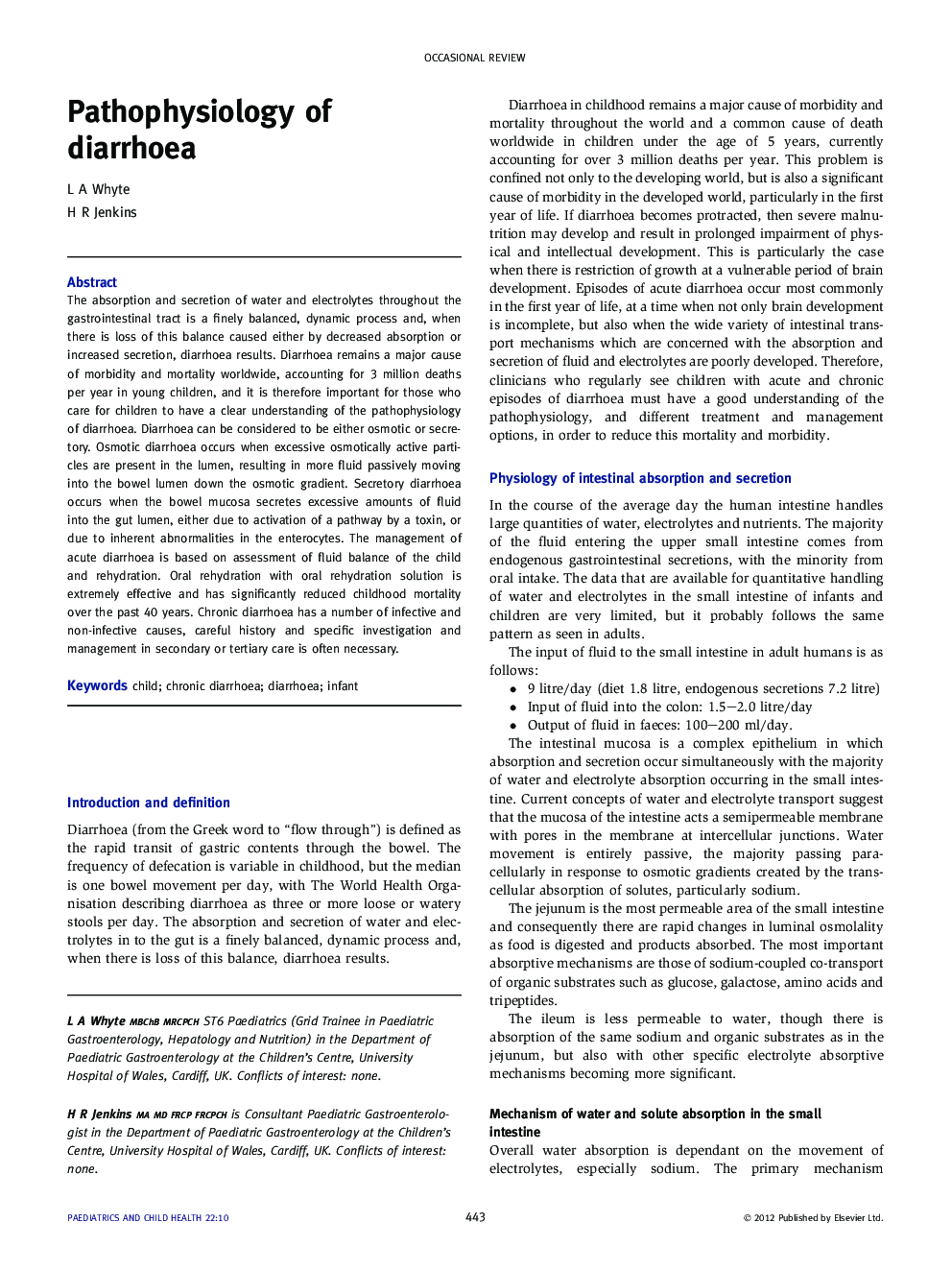| Article ID | Journal | Published Year | Pages | File Type |
|---|---|---|---|---|
| 4172499 | Paediatrics and Child Health | 2012 | 5 Pages |
The absorption and secretion of water and electrolytes throughout the gastrointestinal tract is a finely balanced, dynamic process and, when there is loss of this balance caused either by decreased absorption or increased secretion, diarrhoea results. Diarrhoea remains a major cause of morbidity and mortality worldwide, accounting for 3 million deaths per year in young children, and it is therefore important for those who care for children to have a clear understanding of the pathophysiology of diarrhoea. Diarrhoea can be considered to be either osmotic or secretory. Osmotic diarrhoea occurs when excessive osmotically active particles are present in the lumen, resulting in more fluid passively moving into the bowel lumen down the osmotic gradient. Secretory diarrhoea occurs when the bowel mucosa secretes excessive amounts of fluid into the gut lumen, either due to activation of a pathway by a toxin, or due to inherent abnormalities in the enterocytes. The management of acute diarrhoea is based on assessment of fluid balance of the child and rehydration. Oral rehydration with oral rehydration solution is extremely effective and has significantly reduced childhood mortality over the past 40 years. Chronic diarrhoea has a number of infective and non-infective causes, careful history and specific investigation and management in secondary or tertiary care is often necessary.
